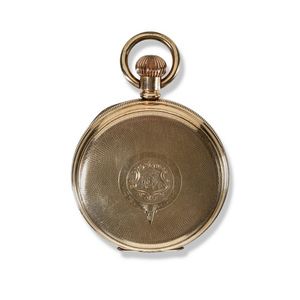
Stewart Dawson Australia 1912 Hunting Case Pocket Watch 7Jewel
Stewart Dawson hunting case pocket watch. English make for Stewart Dawson Australia. 7 jewel 10 year gold-filled hunting case by 'Star'. Running. Serial No.126375. Inscribed 1912.
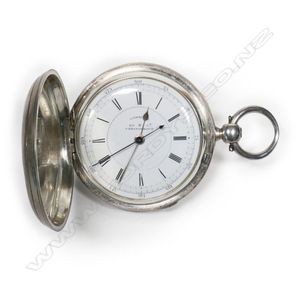
Victorian Silver Pocket Chronograph Watch by Stewart Dawson & Co
A Victorian silver cased pocket chronograph watch, by Stewart Dawson & Co, Liverpool 5.1 cm case hallmarked Birmingham 1884, signed lever wind movement, white enamel dial with centre seconds, marked with maker's details, Roman numerals, 'railtrack'…

Stewart Dawson & Co 18ct Hunter Case Pocket Watch
Stewart Dawson & Co London 18ct hunter cased lever wind small pocket watch, #86967 white enamel dial with Roman numerals, very ornate machine bright cut engraved covers hallmarked Chester C1886

Stewart Dawson & Co 18ct Hunter Pocket Watch
18ct hunter cased Stewart Dawson & Co lever wind small pocket watch white enamel dial with Roman numerals, 3/4 plate the Empress lever

Victorian Silver Pocket Chronograph by Stewart Dawson, 1882
Victorian Silver-Cased pocket chronograph. Case hallmarked Birmingham 1882, by Stewart Dawson of Liverpool. Movement and case #94282. Enamel dial with Roman numerals.

Stewart Dawson & Co. Liverpool Pocket Watch
A sterling silver case full hunter pocket watch by Stewart Dawson & Co. Liverpool, 19th century, 7 cm high
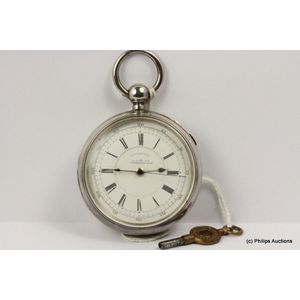
Stewart Dawson & Co. Silver Chronograph Pocket Watch
A silver open faced Pulse pocket by Stewart Dawson & Co., sterling silver, dial marked Sd & Company Liverpool chronograph. Case hallmarked Sd & Co Birmingham 1889143257. Movement engraved Stewart Dawson & Company Liverpool 14325 Pulse watch. Total weight:…

18ct Gold Stewart Dawson Chronograph Pocket Watch
A gold full hunter crown wind pulse pocket watch, 18ct yellow gold, crown wind, dial marked Stewart Dawson & Cos patent double Minute chronograph case hallmarked 18ct Tt Chester 18864622 and 79321. Movement Stewart Dawson & Co. 79321 English chronograph.…

Pair of Sterling Silver Full Hunter Pocket Watches, 1885-1887
Two sterling silver full hunter pocket Watches, marks of stewart Dawson & Co., London, 1885 and Birmingham, 1887, key-wind movements, the white enamel dials with Roman numerals, subsidiary seconds at 6 o'clock, silver case, dials signed, cases hallmarked…
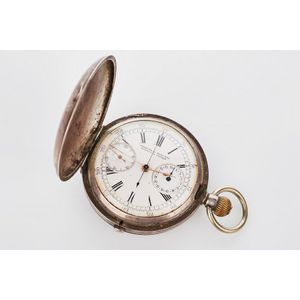
Fairfax & Roberts Chronograph Pocket Watch & Angus & Coote Watch
Silver full hunter chronograph pocket watch, mark of Fairfax & Roberts, Sydney & London, c. 1900, crown-wind movement, the white enamel dial with Roman numerals, subsidiary dials for 30 minute register and constant seconds, together with an Angus & Coote…

Stewart Dawson & Co. Chronograph Pocket Watch, 1884
Sterling silver hunter cased key wind chronograph pocket watch 3/4 plate by Stewart Dawson & Co, Liverpool #102338 Birmingham 1884
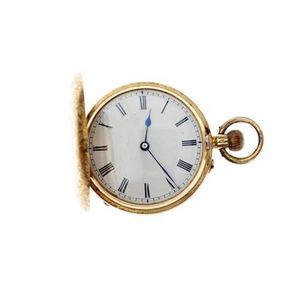
18ct Gold Full Hunter Watch, Stewart Dawson & Co Movement
Lady's 18ct gold full hunter watch, white dial, Roman numerals, push pin at one o'clock, movement marked Stewart Dawson & Co in a finely engraved case, diameter 37.5 mm, wt. 41.7g, not working.

Stewart Dawson & Co. Pocket Watch with Fob Chain
9ct yellow gold pocket watch with 9ct gold fob chain, retailed by Stewart Dawson & Co c.1910 top wind mechanical movement dial marked 'Stewart Dawson & Co. Australian Ltd, made in England' white enamel dial with subsidiary second hand 9ct yellow gold case…

Rolled-Gold Full Hunter Pocketwatch with Engraved History
A rolled-gold full hunter pocketwatch, machine turned case, shield engraved B, face stamped 'Stewart Dawson & Co Ltd - made in America', Keystone Watchcase, engraved to inside 'To Ernest from Carrie 11.9.1912'.

Victorian Sterling Silver Lady's Pocket Watch, Not Working
A Victorian sterling silver lady's open face pocket watch, white enamel dial and movement signed Stewart Dawson & Co, Liverpool, Roman numerals, subsidiary seconds, and key wind. Birmingham 1885, size 41.6 mm, not working, key attached.

Sterling Silver Full Hunter Pocket Watch, Rotherhams Movement (1910)
A hallmarked sterling silver full hunter pocket watch, with black Roman numerals, subsidiary seconds, push piece at 4 o'clock, movement by Rotherhams London for Stewart Dawson & Co. Case marked Birmingham 1910 (works just)

Stewart Dawson 18ct Gold Chronograph Pocket Watch
A Stewart Dawson & Co. 18ct gold keyless case chronograph pocket watch having signed movement

18ct Gold Stewart Dawson Pocket Watch, c.1900
A keyless Swiss 18ct gold open face pocket watch, stamped 18K and made for Stewart Dawson, c.1900. Rolled gold bow. Lever movement 3/4 plate. Diameter 51 mm. TW 96.4gms.

Rare 18ct Gold Double Minute Chronograph Fob Watch
Important and rare antique 18ct gold double minute chronograph fob watch, by makers Stewart Dawson & Co., England, engraved, c.1888, in excellent working order (total weight 135gr)

1883 Birmingham Hallmarked Sterling Silver Pocket Watch, Stewart Dawson Co
Sterling silver pocket watch with key Hallmarked Birmingham 1883. Glass missing. Stewart Dawson & co Liverpool.
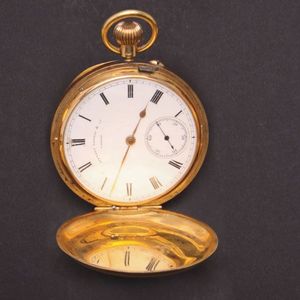
18ct Gold Pocket Watch with Provenance
18ct. gold case pocket watch English longtail lever. White enamel dial with Roman numerals, gold coloured hands and seconds dial at the 6 o'clock. Stewart Dawson & Co. Case marked Chester, 1906. Engraved initialled front, inner dust lid engraved 'To…
 Loading more...
Loading more...